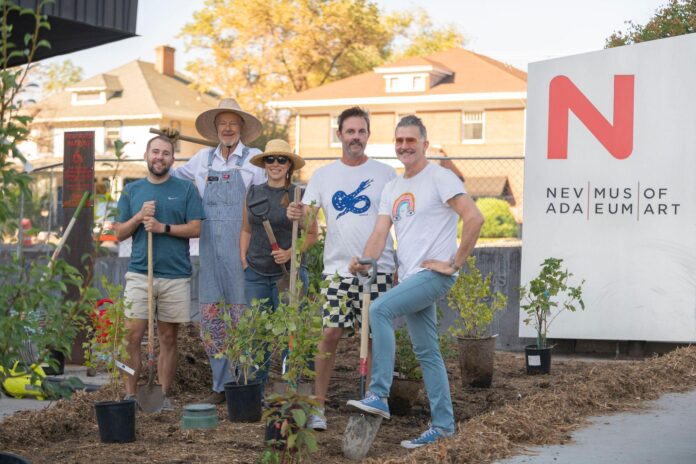On 1 September 2022, the temperature in Reno, Nevada’s capital, reached 99°F, around 10°F above the historical average for that day of the year; it would ultimately be the state’s warmest September on record. Outside the Nevada Museum of Art, members of the artist collective Fallen Fruit debuted their new public installation Monument to Sharing (2022), which features more than 20 fruit-bearing trees and other plantings intended to prompt conversations about scarcity, community and ecology—and provide free food to visitors.
The project is part of a major sustainability effort at the museum, which is in the midst of a $60m expansion and implementing operational changes to reduce its waste and carbon emissions to levels consistent with the Paris Climate Agreement. (Nevada’s state government and Reno’s municipal government have both committed to meeting the goals of the agreement.) According to the museum’s recently released analysis of its energy consumption in 2019, 95% of its carbon emissions that year were generated by its building, with staff travel contributing 4% and shipping accounting for just 1%.
“It turns out those numbers are actually consistent across most museums,” says Apsara DiQuinzio, the museum’s senior curator of contemporary art and leader of its “green team”. “The buildings are so big and consume so much energy. We all have these really inefficient [heating, ventilation and air conditioning (HVAC)] systems that require climate control levels to be maintained, which we’re learning is actually a bit of a fallacy.”
She says that, working with the Amsterdam-based non-profit Ki Culture (which supports institutions on developing and implementing sustainability plans), the museum has learned, for instance, that the industry-standard temperature variability of plus or minus 5°F that museums are expected to maintain by running those inefficient HVAC systems around the clock can actually be widened to plus or minus 10°F without putting collections at risk. Research by Germany’s Kunstsammlung Nordrhein-Westfalen published in October 2022 reflects similar findings and calls for huge reductions in energy consumption and costs.

In summer 2022, Fallen Fruit artists David Allen Burns and Austin Young, with the assistance of museum staff and Tom Stille of Reno’s River School Farm, planted the living art installation Monument to Sharing. The installation is a part of the museum’s expansion project, scheduled to be
complete by 2025 Courtesy Nevada Museum of Art
The Nevada Museum of Art has developed a comprehensive and public-facing sustainability action plan that now includes adopting a less energy-intensive climate control regiment, as well as cutting its building’s energy consumption in half, by 2025. The plan also includes small operational improvements like replacing incandescent light bulbs with LEDs, extending the duration of exhibitions and eliminating single-use plastics.
That action plan was partly enabled by a scoping grant the museum received last year from the Helen Frankenthaler Foundation’s climate initiative. It is now applying for another Frankenthaler Climate Initiative grant to implement that plan, which includes installing solar panels, heat pumps and other energy-saving infrastructure in tandem with its expansion.
“People often think about sustainability as being costly, but it’s actually the opposite,” DiQuinzio says. “The savings are huge in the long run—plus we’re also saving the most important thing.”

























